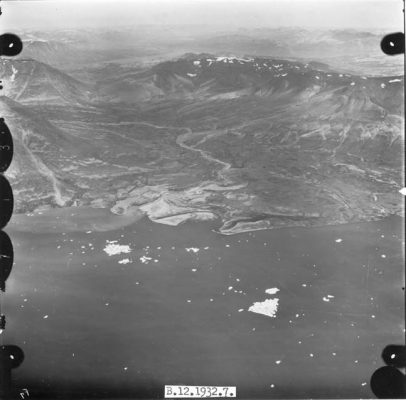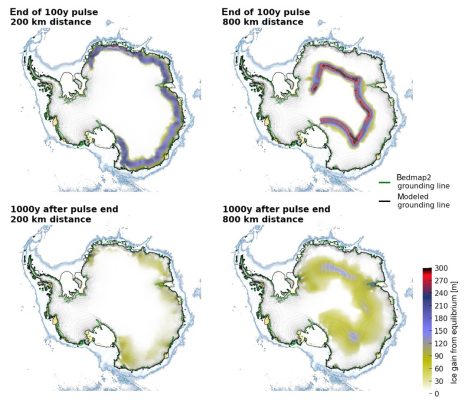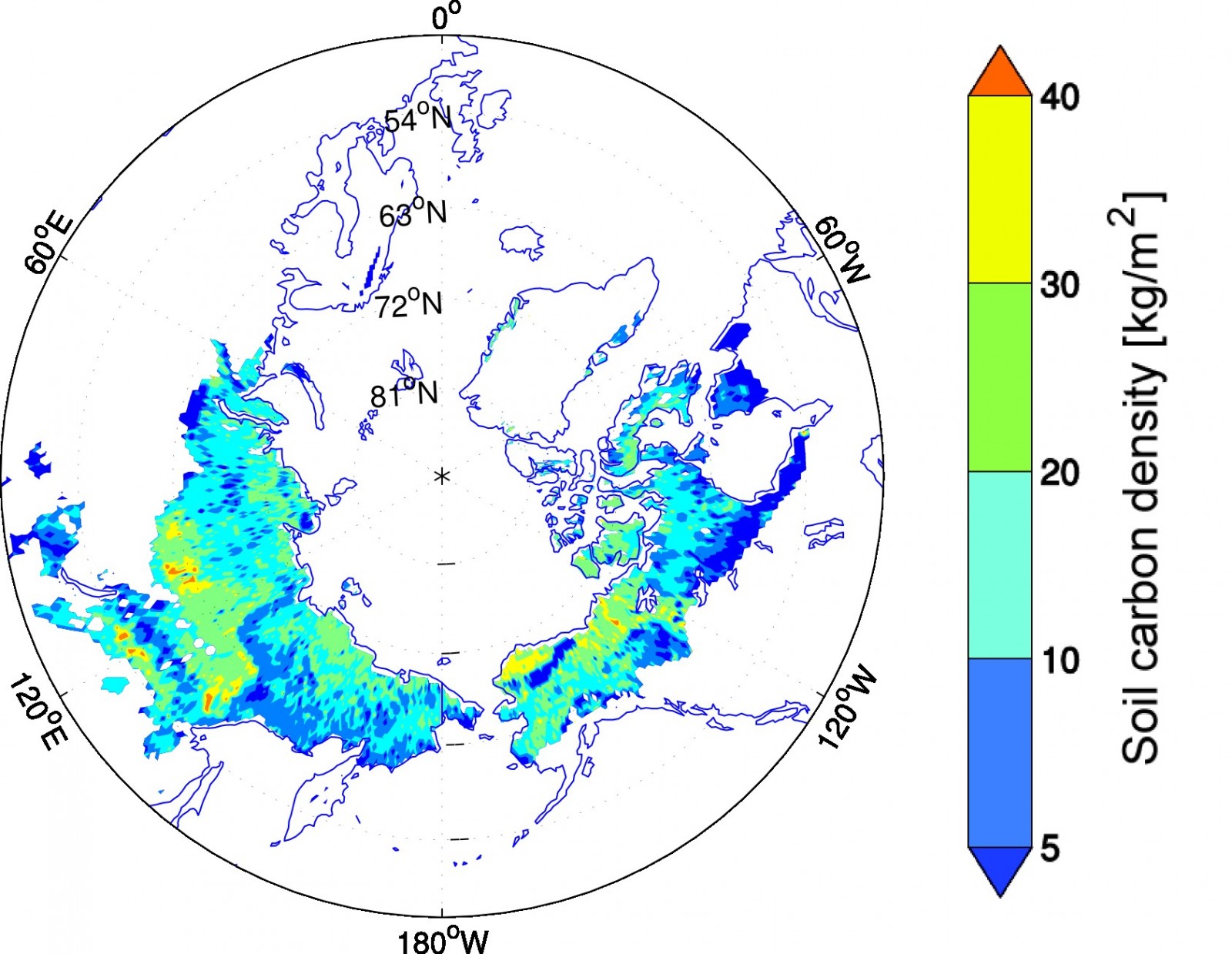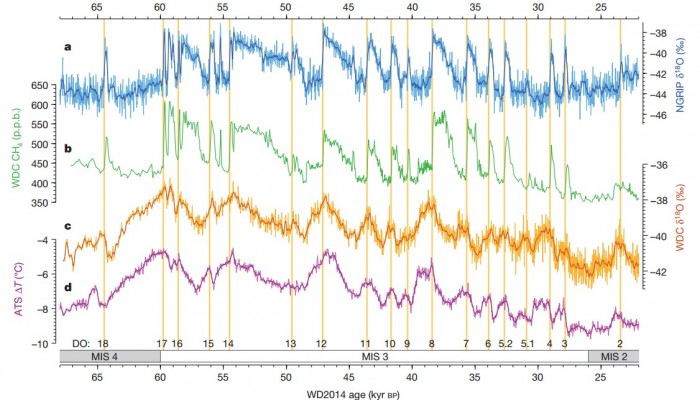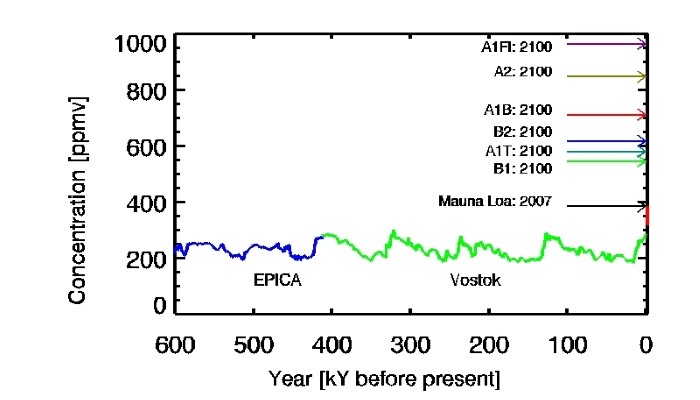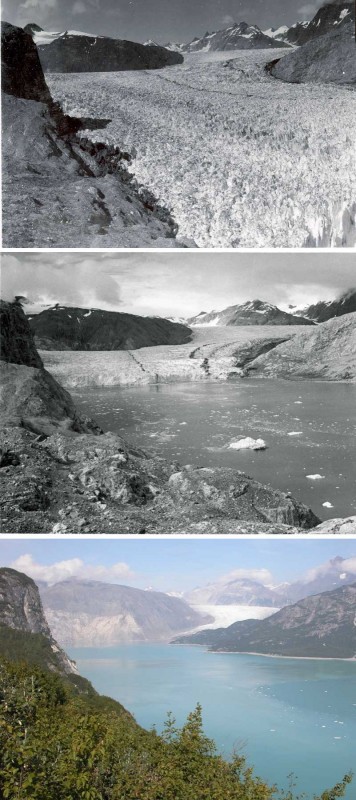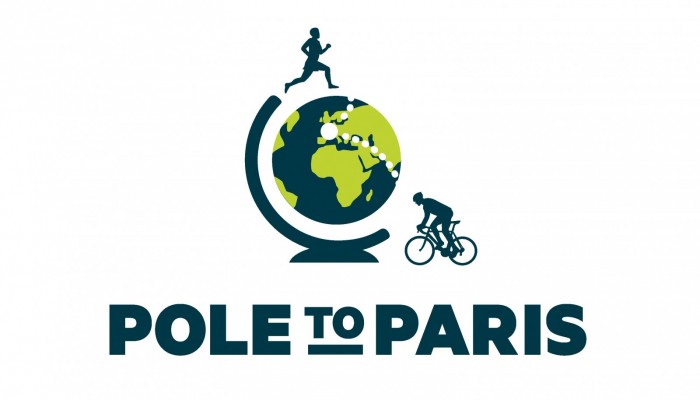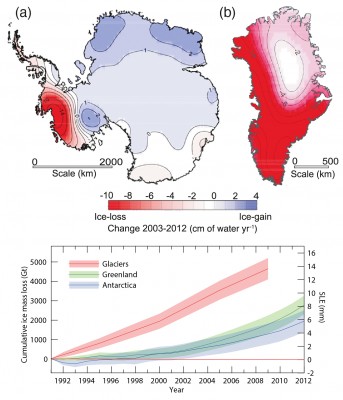
(Upper) Distribution of ice loss determined from Gravity Recovery and Climate Experiment (GRACE) time-variable gravity for (a) Antarctica and (b) Greenland, shown
in centimetres of water per year (cm of water yr –1 ) for the period 2003–2012. (Lower) The assessment of the total loss of ice from glaciers and ice sheets in terms of mass (Gt) and
sea level equivalent (mm). The contribution from glaciers excludes those on the periphery of the ice sheets. (Credit: IPCC (2013), Assessment Report 5, Working Group I, Technical Summary , Figure TS.3, p41)
Context On the eve of the COP21, it is of paramount importance to recall how strongly the cryosphere is affected by Climate Change. Today, we present the impact of melting ice on sea level rise, as it is presented in the latest assessment report of the Intergovernmental Panel on Climate Change. Quick facts -Since 1992, the Glaciers, Greenland and Antarctic Ice Sheets have risen the sea level by 14 ...[Read More]
